Have you found yourself trying to stretch your budget while still creating fun projects? Maybe you need a simple, yet cute and fun idea to keep your students engaged?

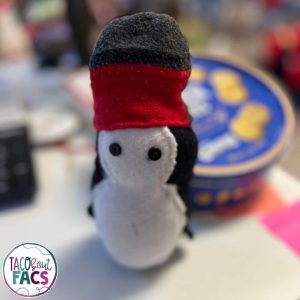
Check out the darling sock animals! This project only used hand-sewing for my FACS 1 students. It was the perfect project to practice sewing techniques after learning the basics of sewing, such as threading a needle, tying a knot, and sewing on a button.
You can read more about how I started with the basics and kept sewing supplies organized here.
Hand-Sewing Project Supplies
For this project, students brought in socks. Any socks will work- ankle socks, tall socks, toe socks, old socks, new socks, but preferably not hole-y socks. A few did purchase brand new packs of socks, but that certainly wasn’t necessary. I would reason to believe most households have at least one or two socks that are missing a partner.
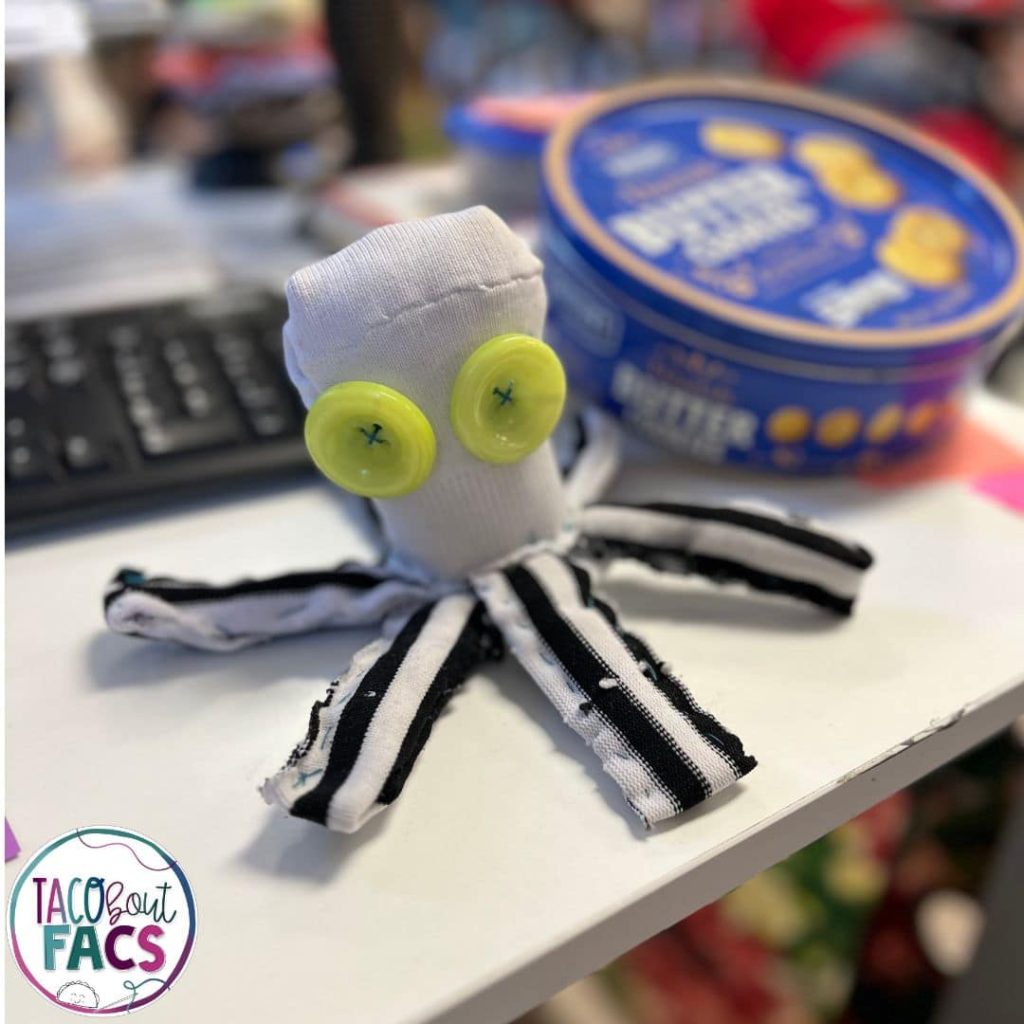
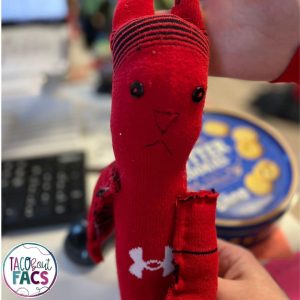

I also sent a school-wide email for extra socks. In fact, I still had socks in my school mailbox in December and we completed the project in September. I have a sock tub in the closet waiting for the next time this project rolls around.
I was certain to better organize my hand-sewing supplies to ensure supplies weren’t misplaced. You can read more about how I organized supplies here.

I still have quite a few spools of thread, enough that I didn’t need to order more. At the start of each semester, I always like to send an email to parents that the classroom would gladly accept thread, fabric, buttons, etc. Those are usually supplies I try not to spend money on if possible.
Sock Animal Ideas
I purchased the book Socks Appeal with sock animal directions. The purchase was inexpensive and it had sock animal directions for easy, intermediate, and challenging projects. Not all students can visualize creating a sock animal for this project. This book was relatively simple and most 7th and 8th grade students were able to follow the directions.
Some directions were a bit more vague, but I also think this was a good opportunity for them to work on troubleshooting the next step.
I pulled the book apart in hopes to scan the pages to upload to a Canvas module. I figured it would be much easier to have the directions available online versus a paper copy and trying to make sure I had enough copies of each animal for the correct number of students.
The book is smaller than standard copy paper so it took many tries and I could not figure out how to best scan the pages. Then I found the digital version and I recommend you purchase that instead of the actual book. This website has 20% off the digital download.
And suddenly, the clouds parted, I had the pdf and was able to save each project individually for students who knew what they were making and upload the entire pdf for students who still wanted to check out all options.
Sewing Project Organization
Project organization is always a challenge. I have to breathe through the few weeks of the project knowing my room will soon return to working order and look put together.
Sewing supplies are easily and quickly put away. I use lunch trays, felt, and an over-the-door shoe organizer. If you haven’t read the blog post about organization, you can read that here. I was able to make sure sewing supplies weren’t misplaced and have very few needles missing because of it.
Projects for each hour were set in specific kitchens. Students were encouraged to keep all supplies, tiny pieces of socks, etc together with their bigger project. As inconvenient as it is to tie off the needle at the end of the hour, I don’t have enough supplies for each student to keep the needle in the sock.
It also works nicely to have each class use separate areas for projects. There will always be one or two who manage to put their project in with a different class, but they usually find it.
Sewing Project Timeline
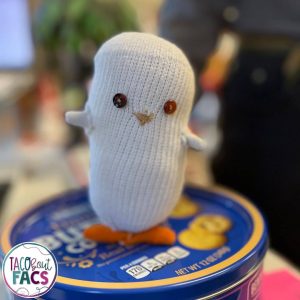
I do spend an entire week practicing how to thread a needle, tie a knot, and sewing on a button. I find it is much easier to spend the time working on the foundations before moving on to a project.
I am willing to show students how to do the task, but then make sure they try rather than doing it for them. I also link YouTube videos in Canvas modules so students can watch the video in a slower speed or on a loop. Sometimes this tends to be easiest for visual students who need a reminder.
We usually spend 2 weeks on sewing the sock animals. Of course, there tends to be various things happening that might change up our schedule into closer to three weeks.
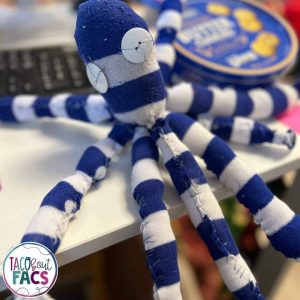
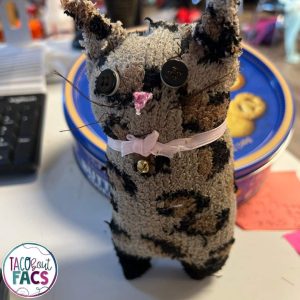
What about students who are absent? A natural consequence for missing project time is coming in before school or during advisory, which is a study hall time. I do not allow students to take the project home. I have seen far too many struggling sewers come back with an impressive project. That defeats the purpose.
Sure, we don’t want to see our kids struggle, but I am not teaching a college level sewing class. I want students to practice the basics of sewing. If a child is putting forth the effort and using time wisely, they will be graded accordingly.
Overall, this project was simple, easy, and worth the time to complete. Seeing students show off their creativity and taking ownership of the project was quite rewarding.

